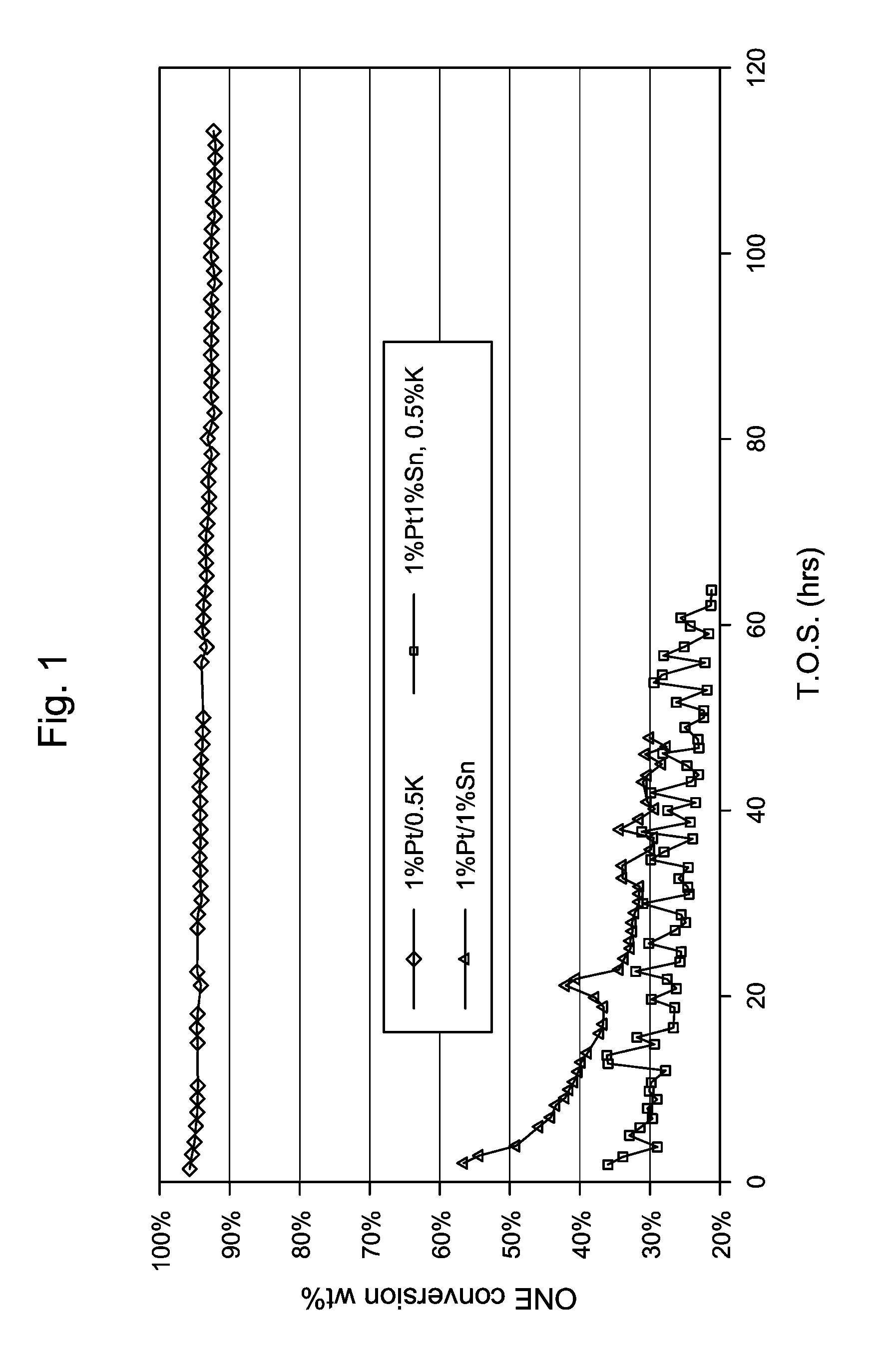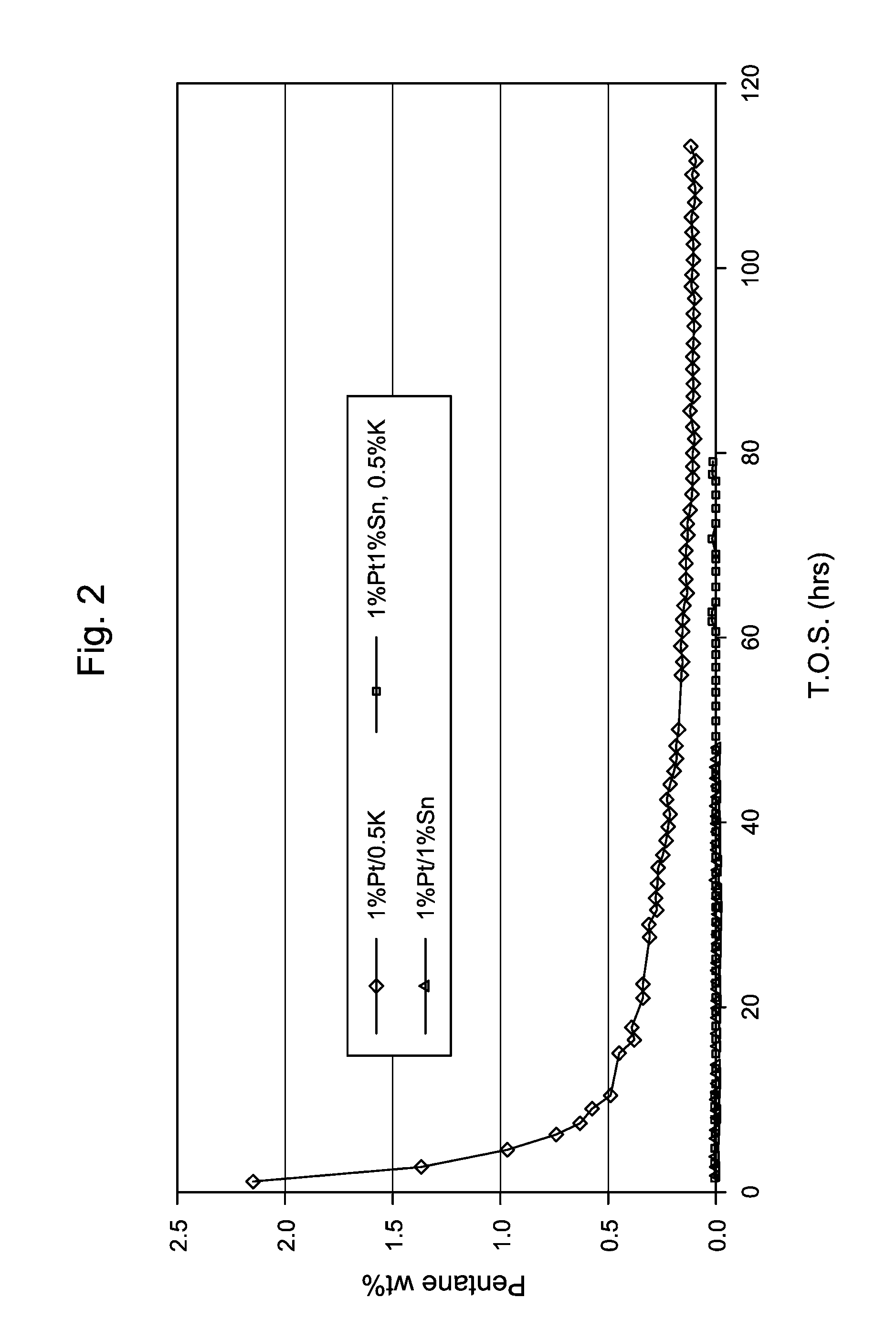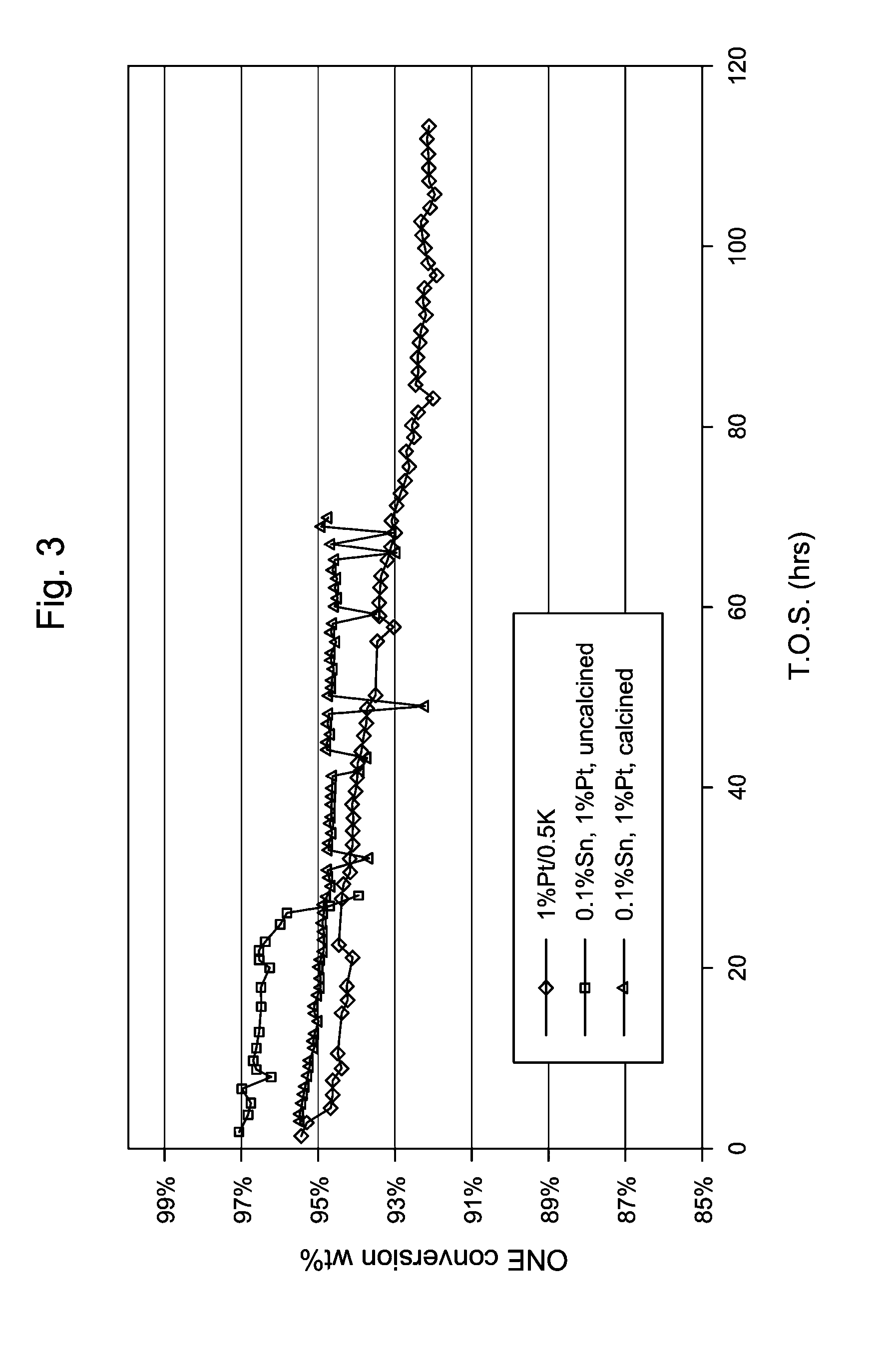Dehydrogenation Catalyst and Process
a technology of dehydrogenation catalyst and process, which is applied in the direction of physical/chemical process catalyst, metal/metal-oxide/metal-hydroxide catalyst, hydrocarbon by addition and hydrogenation, etc. it can solve the problems of difficult to separate from the phenol product, high cost of propylene, and loss of valuable cyclohexanon
- Summary
- Abstract
- Description
- Claims
- Application Information
AI Technical Summary
Benefits of technology
Problems solved by technology
Method used
Image
Examples
example 2
Production of 0.1% Sn / 1% Pt / / SiO2 Catalyst
[0108]A catalyst was prepared by initially impregnating a silica extrudate with an aqueous solution of tetraammine Pt nitrate. After drying in air at 121° C., the resultant platinum-containing extrudate was impregnated with an aqueous solution of tin chloride and then dried in air at 121° C. Part of the resultant product was retained (uncalcined catalyst 2A) and part was calcined in air at 350° C. for 3 hours before being used in subsequent catalyst testing (calcined catalyst 2B). The compositions of the catalysts are summarized in Table 1.
examples 3 to 8
Production of 1% Pt / x % Sn / SiO2 Catalysts
[0109]Five additional catalysts containing 1 wt % platinum and varying amounts of tin, namely 0.05 wt % (Example 3), 0.1 wt % (Example 4), 0.15 wt % (Example 5), 0.25 wt %
[0110](Example 6), 0.5 wt % (Example 7), and 1 wt % (Example 8), were prepared by incipient wetness impregnation. In each case, a 1 / 20 inch quadrulobe silica extrudate was initially impregnated with an aqueous solution of tin chloride and then dried in air at 121° C. The resultant tin-containing extrudates were then impregnated with an aqueous solution of tetraammine Pt nitrate and again dried in air at 121° C. Each of resultant products was calcined in air at 350° C. for 3 hours before being used in subsequent catalyst testing. The compositions of the catalysts are summarized in Table 1.
example 9
Production of 1% Pt / 1% Sn / 0.5% K / SiO2Catalyst
[0111]A potassium, tin and platinum containing 1 / 20″ quadrulobe silica extrudates was prepared by incipient wetness impregnation. Initially, the silica extrudate was impregnated with an aqueous solution of potassium carbonate, then dried in air at 121° C. and calcined again in air at 538° C. for 3 hours. The potassium-containing extrudate was then impregnated with an aqueous solution of tin chloride and then dried in air at 121° C. The resultant potassium and tin-containing extrudate was then impregnated with an aqueous solution of tetraammine Pt nitrate and again dried in air at 121° C. Each of resultant products was divided into two parts; a first part, designated A, which was used without calcination in subsequent catalyst testing and a second part, designated B, which was calcined in air at 350° C. for 3 hours before being used in subsequent catalyst testing. The compositions of the catalysts are summarized in Table 1.
PUM
| Property | Measurement | Unit |
|---|---|---|
| Temperature | aaaaa | aaaaa |
| Temperature | aaaaa | aaaaa |
| Temperature | aaaaa | aaaaa |
Abstract
Description
Claims
Application Information
 Login to View More
Login to View More - R&D
- Intellectual Property
- Life Sciences
- Materials
- Tech Scout
- Unparalleled Data Quality
- Higher Quality Content
- 60% Fewer Hallucinations
Browse by: Latest US Patents, China's latest patents, Technical Efficacy Thesaurus, Application Domain, Technology Topic, Popular Technical Reports.
© 2025 PatSnap. All rights reserved.Legal|Privacy policy|Modern Slavery Act Transparency Statement|Sitemap|About US| Contact US: help@patsnap.com



